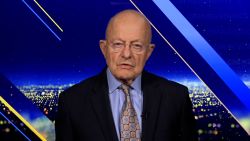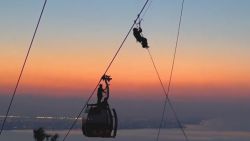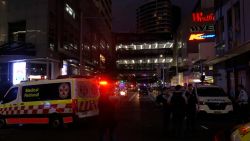The Indian Navy has welcomed its first woman pilot, with Sub Lieutenant Shivangi taking control of an aircraft in another significant milestone for the country’s armed forces.
Shivangi, 24, who goes by one name, will be given her wings and join naval operations in a ceremony on Monday.
“It’s a very big thing,” Shivangi told CNN. “It’s a big responsibility for all of us and I know that I have to do well.”
Shivangi completed her basic training in 2018 at the Indian Naval Academy and was brought to Kochi, in southwest India’s Kerala state, to train with the Indian naval air squadron, the INAS 550.
Until 1992, India’s naval forces only permitted women to serve in medical services.
Shivangi will be tasked with flying Dornier aircraft, which are used by the navy for transport and maritime reconnaissance, taking off and landing on the shore, rather than from an aircraft carrier.
“We also use it for certain rescue missions, and according to the requirement, medical evacuation and all those things, so I’ll be a part of all those missions,” Shivangi said.
According to Cmdr. Sridhar Warrier, defense press relations officer for the navy, the class of aircraft Shivangi will be flying “cover large distances over the sea and provide information to the ship at sea of any suspicious or interesting activity happening.”
The Indian Navy has positions for 735 pilots, with about 644 currently filled, according to Indian Ministry of Defense figures. More than 200 aircraft make up its naval air wing, including MIG 29-K fighter jets, Boeing P-8I maritime surveillance aircraft, several classes of helicopters and reconnaissance aircraft.
Dreams of becoming a pilot
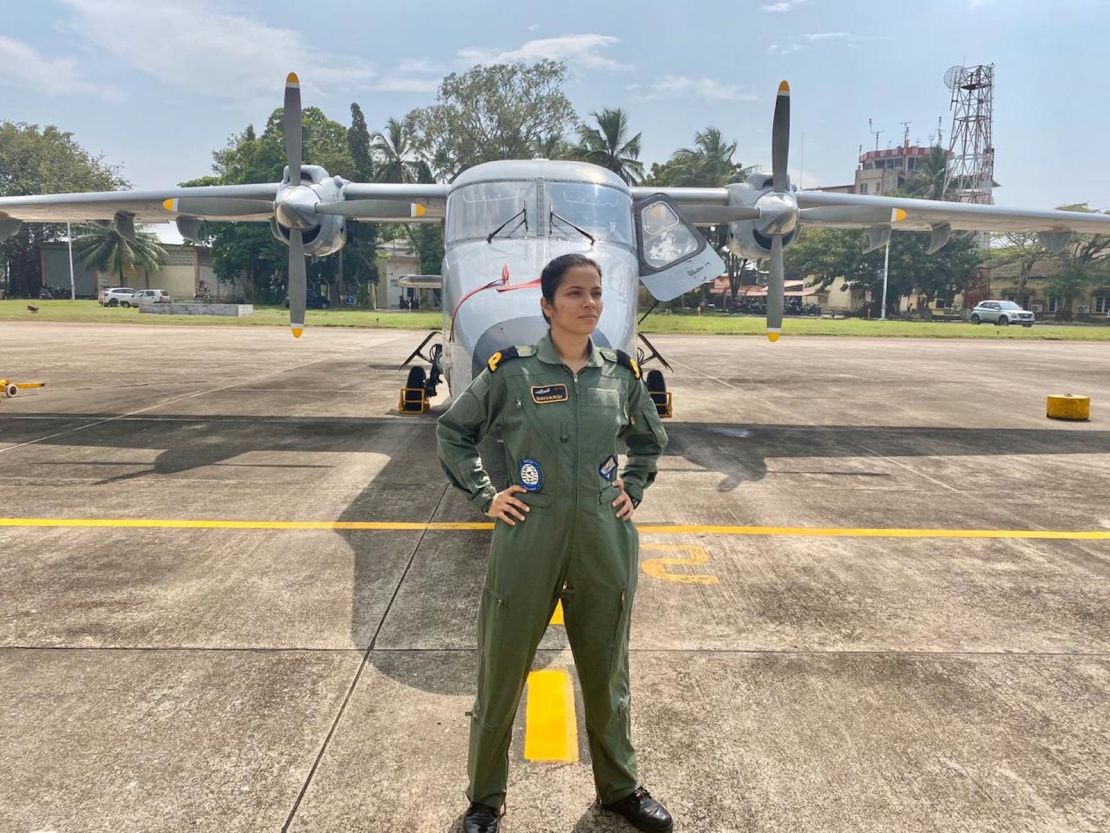
Shivangi, who grew up in Muzaffarpur in India’s eastern Bihar state, said she had wanted to become a pilot since she was a young girl.
“I was about 10 years old and I was at my grandfather’s place and there was some minister who had come to meet people,” she said. “I had gone with my grandfather to see it and I saw a man who was flying a helicopter. It was very inspiring for me. In my mind I thought that maybe some day I’ll also fly something like this.”
After completing a mechanical engineering degree at the Sikkim Manipal University of Technology, Shivangi began further studies at the Malaviya National Institute of Technology in Jaipur.
It was here that the navy beckoned when a recruitment officer came to the college.
“They had shown a presentation in which there were the various aspects of life in the navy, all those things, and that kind of motivated me,” she said, adding that she then dropped out of college to join up.
Shivangi said the training had not been easy but she had received “massive support” from her naval squadron in Kochi.
“People were very supportive, I never felt like I am the only lady here, so that was because of my squadron and my instructors and all the people here,” she said.
Other women pilots set join
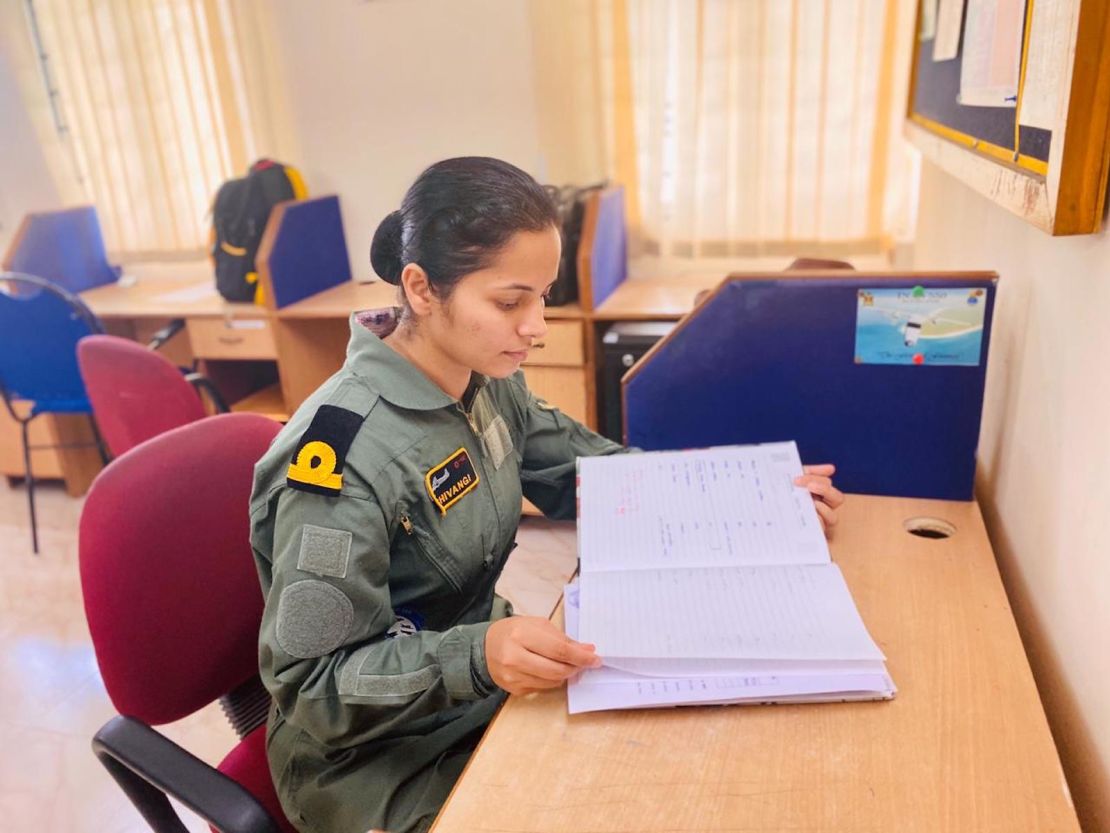
Shivangi is not the first woman pilot to join India’s armed forces.
In 2016, the Indian Air Force enlisted women pilots for the first time and in May 2019, Flight Lieutenant Bhawana Kanth became the first woman pilot to qualify to undertake combat missions on a fighter jet.
There are also two other women who are set to become navy pilots on December 21.
For now, Shivangi and the other two women will fly transport planes but will not go aboard ships.
“The navy is not yet ready to be able to take ladies onboard ships because it requires certain infrastructure changes to ship design and that takes time,” Warrier said.
“When the ships are women-ready, probably the navy will cross that bridge, and then you know we may have some women in other streams also.”
The Indian Navy has accepted women into its ranks for decades in the medical field, Warrier said.
And since July 1992, women have been able to take up various additional roles within the navy, including in air traffic control, education and training, in the meteorological branch, law, logistics and in observer units.
“They would be going to the battlefield but they were not in the driving seat, that means they were not in the cockpit. They would be the one who would be controlling the tactics, who would be controlling the weapons, who would be the eyes and ears for the aircraft and for the pilot,” Warrier said.
“It’s now that the glass ceiling has been broken in so far as getting into the naval cockpit is concerned,” he added.
Shivangi said that the pressure is now on to perform.
“You know every time somebody is doing something for the first time there is a lot of pressure, there is a lot of expectation so obviously the pressure will be there,” she said.







